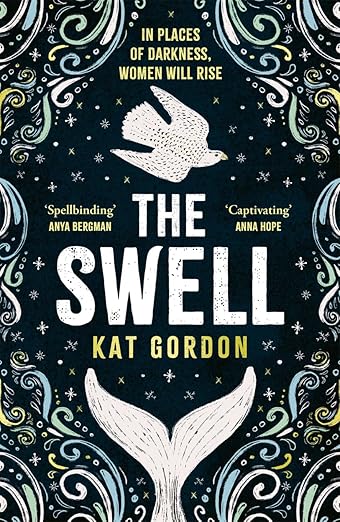Travel to London’s Death Makes No Distinction, Lucienne Boyce
A DAN FOSTER MYSTERY – A LONDON BOOK TRAIL
The good things about books set in London, even in the present day or in the past, is that many of the locations are real.
Many are still there, despite the various changes the city has been through across the ages. There is so much history here that you really do have to wander, walk slowly and soak it all in. Look up – that’s the beauty of a city where history is all around you. So who to pick as your perfect guide? Dan Foster is your ideal BookTrailer..
The Feathers, Hand Court
In Death Makes No Distinction, Dan Foster’s investigation into the death of a poor, unknown woman begins with the discovery of her body at a tavern called the Feathers in Hand Court. Today Hand Court is a pedestrian passage running between High Holborn and Sandland Street. Like many of the places mentioned in the book, it now looks very different to how it did in the eighteenth century. According to the 1815 guidebook, The Epicure’s Almanack, the hungry Londoner who called into the Feathers could enjoy “a prime well-dressed joint” and “wines and foreign spirits”.
Locations in Death Makes No Distinction
The other tavern referred to in the scene – The Wheatsheaf – was also in Hand Court. This public house was famous for serving roast potatoes and butter with its home-brewed ale. The oyster shops Dan notices as he leaves Hand Court to go back onto Holborn also existed.
The Feathers had gone by 1890, and the Blitz saw the destruction of much that remained of the Court. Hand Court now contains a row of terracotta-fronted nineteenth-century buildings and the entrance to an underground car park.
Locations in Death Makes No Distinction
Berkeley Square
Less than half an hour later, Dan passed Devonshire House, turned into Berkeley Street and entered Berkeley Square. Louise Parmeter’s house was on the west side overlooking the gardens where the young plane trees were beginning to show signs of regrowth after the winter. A couple of constables from the Great Marlborough Street police office stood outside the front door, warily eyeing the crowd on the pavement below. These cheerful idlers kept up the strength for their vigil by frequent forays to the Three Chairmen, a public house on the corner of Hay Hill.
Dan is dismayed when he is taken off the case of the murdered woman at the Feathers and told instead to investigate the murder of Louise Parmeter, a blue stocking who was once mistress to the Prince of Wales. The circumstances of Louise’s death are very different to those of the woman at the Holborn tavern. Louise has been murdered in her mansion in Berkeley Square.
50 Berkeley Square
As Dan saw, there were plane trees in the centre of Berkeley Square, along with a statue of George III. Today many of the Square’s eighteenth-century buildings still survive. They include number 50 Berkeley Square, said to be the most haunted house in England. According to one story, the apparition is the ghost of a madman who was kept locked in the attic. Another version suggests that he is the spirit of a jilted lover.
BookTrail Locations in Death Makes No Distinction
In spite of being one of London’s most fashionable squares, the area was still prey to highwaymen and footpads even in George III’s time. Hay Hill in particular was considered to be a dangerous spot. Louise Parmeter’s employment of a pugilistic coachman was a not unusual precaution taken by the wealthy to protect themselves when out and about.
The Three Chairmen tavern, where the gawpers buy their drinks, was at the bottom of Hay Hill.
However, Louise’s mansion and the mews behind it are fictitious.
St James’s Market
St James’s Market with its mouldering market house had not kept up with the district’s more recently established grocers, butchers, fishmongers, confectioners and other provisioners of royalty. Meat and fish were still to be bought there, but haughty servants looking for delicacies for their masters’ tables were rarely seen in its precincts.
Dan’s investigations lead him to a tavern in St James’s Market. The tavern is fictitious, but St James’s Market, which was particularly known as a meat market, was in the middle of a network of streets and alleys behind Jermyn Street and the Haymarket. The market had been in operation since the early 1660s.
BookTrail Locations in Death Makes No Distinction
BookTrail Locations in Death Makes No Distinction
The market house was built in 1665 and housed stalls both inside and outside its walls. It’s no wonder it was dilapidated by Dan’s time! It was demolished in 1818. Most of the houses in the market place had already been cleared away to make way for new streets which included part of Regent Street and the extension of Charles Street. The old St Alban’s Street was demolished; the existing street was formed from a renamed section of Market Lane.
Norris Street
A new, smaller market was laid out between Norris Street and Jermyn Street. By the 1880s typhoid was rife in the area, which was much run down by now. Many of the 1818 buildings were demolished after the First World War to make way for a new street called St James’s Market. A cinema built in the 1920s once occupied part of the site, and closed in 1959.
BookTrail Locations in Death Makes No Distinction
As mentioned in Death Makes No Distinction, in Dan’s time the rich and fashionable still frequented neighbouring places of entertainment such as the Tun and St Alban’s taverns, the card rooms in Charles Street, and the chocolate rooms in St Alban’s Street – but if they wanted to hang onto their valuables they steered clear of the narrow streets around St James’s Market.
Today if you visit St James’s Market you will find it is still a haven for foodies, with plenty of choice for eating and drinking.
Wine Office Court, Fleet Street
Dan followed them to Wine Office Court, a narrow lane between Fleet Street and Gough Square.
Dan’s investigations also take him to Wine Office Court, which is off Fleet Street. The name of the court is derived from the Excise Office which stood there in the seventeenth century, and which granted licences to wine sellers. Oliver Goldsmith once lived in Wine Office Court, where he wrote The Vicar of Wakefield.
BookTrail Locations in Death Makes No Distinction
17 Gough Square
Today the Court links Fleet Street and Shoe Lane, but in Dan’s time it ran into Gough Square. Dr Johnson lived at 17 Gough Square, and if you want to know what an eighteenth-century house looked like inside you can visit his house. For details of opening times see www.drjohnsonshouse.org/
BookTrail Locations in Death Makes No Distinction
Afterwards you can go back to Wine Office Court and treat yourself to a drink in Ye Olde Cheshire Cheese. This is one of the oldest public houses in London, having been built on the site of previous inns after the Great Fire of 1666. The place was so popular in the eighteenth century that diners would call in to order their meals two hours beforehand. Famous visitors include Charles Dickens, Mark Twain and P G Wodehouse.
However, there is no evidence that Dr Johnson ever drank there or sat in the chair said to be his.
BookTrail Locations in Death Makes No Distinction
Russell Street, Covent Garden
Dan retrieved his hat and coat and stepped out into Russell Street, headed towards the lights and noise of the Piazza. The shops in the surrounding streets were still open, the cafes and taverns full. A few of the market stalls were trading, though most stallholders had packed up and gone home.
BookTrail Locations in Death Makes No Distinction
Bow Street Magistrates’ Office
At the end of his working day, Dan returns to his home in Russell Street. This was an ideal place for him to live, as it was only a minute or two from the Bow Street Magistrates’ Office. He was not the only Bow Street Runner to live close to his work. Carpmeal, who we meet in Death Makes No Distinction, combined running a tavern in nearby Broad Court, off Bow Street, with his policing duties. Officer Macmanus lived in Stanhope Street, Jealous in Brownlow Street, and Clarke on the Strand. An officer called Heley lived in Russell Street.
BookTrail Locations in Death Makes No Distinction
BookTrail Locations in Death Makes No Distinction
Russell and Bow Street
Russell street was built in the 1630s. In the eighteenth century it was a mixture of shops, lodging houses, coffee houses and inns. In the book, the drinks for a Foster family celebration are bought in the Red Lion at number 13, which was next door to the Russell Coffee House. Other coffee houses included Will’s on the corner of Bow Street, and Tom’s. Both were frequented by writers: Will’s by John Dryden and Alexander Pope, Oliver Goldsmith and Dr Johnson at Tom’s.
Famous residents (apart from Dan Foster of course!) included Charles and Mary Lamb, who moved to Russell Street in 1817. They loved living near the noise and bustle of Covent Garden, the theatres, and Bow Street Magistrates’ Court.
BookTrail Boarding Pass: Death Makes No Distinction
Twitter: @LucienneWrite web: //www.lucienneboyce.com/





